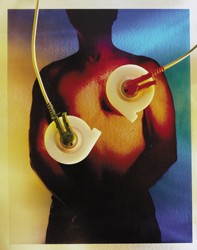Peer Reviewed
Feature Article Cardiovascular medicine
Investigating the patient with bradycardia
Abstract
Bradycardia may be a normal physiological response or a manifestation of a wide variety of pathological conditions, both cardiac and non-cardiac. It is arbitrarily defined as a heart rate of less than 60 beats per minute, although the resting pulse may normally be considerably less than this, particularly in fit young adults. A careful history and thorough physical examination are necessary to guide rational, appropriate investigations and, if indicated, treatment.
Key Points
- Healthy adults may have a resting pulse that is less than 60 beats per minute.
- It is important to correlate symptoms with the episode(s) of bradycardia.
- Drug-related bradycardia is a very common problem in clinical practice.
- The 12-lead ECG is the initial investigation for bradycardia.
- 24-hour Holter monitoring is more helpful when symptoms are frequent.
- Temporary cardiac pacing may be useful if the bradyarrhythmia has a reversible cause.
- Permanent cardiac pacing may be necessary for advanced conduction system disease and once reversible causes have been excluded.
Purchase the PDF version of this article
Already a subscriber? Login here.

